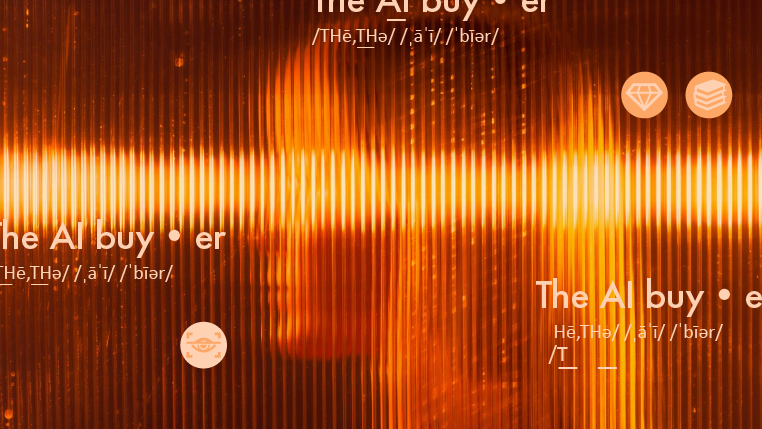
The AI Buyer Profile
Published on 7 May, 2025 | Author: Digitalzone
Artificial intelligence is no longer an emerging trend—it’s the engine behind modern business transformation. From streamlining operations to enhancing customer experiences and accelerating decision-making, AI has cemented its place as a must-have across industries.
But while much of the conversation focuses on what AI can do, a more important question often gets overlooked: who is actually making the decision to bring AI into an organization? Who’s driving the conversations, doing the research, and signing the contracts?
Welcome to the era of the modern AI buyer. Understanding who they are, how they think, and what they need isn’t just useful—it’s essential.
We’re breaking down the full profile of today’s AI buyer and researcher, uncovering key insights around roles, industries, company size, behavior, and buying motivations. Whether you’re selling AI or building it, this is your playbook.
Who is the AI buyer?
Let’s start with a clear definition. The AI buyer is an individual—or often a group—responsible for researching, evaluating, and purchasing AI solutions for their organization. This can include tools, platforms, services, or custom-built technologies powered by AI.
While it might be tempting to assume these buyers all have “AI” in their job title, that’s far from the reality. In fact, the AI buyer exists across departments—spanning IT, Operations, Marketing, Finance, Procurement, Sales, and Customer Success. This cross-functional spread highlights how AI has moved beyond the realm of tech into every corner of the business.
AI buying is no longer a purely technical decision. It’s strategic. And as companies seek to integrate AI into their operations, marketing stacks, customer experience strategies, and more, the number and variety of AI buyers has exploded. The key takeaway? AI is now everyone’s business.
Where they’re located and what they work on.
Globally, AI interest is booming—but it’s most concentrated in a few key regions. The United States leads the pack, followed by the United Kingdom, Germany, the Netherlands, and Canada. These countries are home to innovation hubs, large tech ecosystems, and companies investing heavily in digital transformation. If you’re looking to connect with the highest number of AI buyers, this is your regional sweet spot.
In terms of industries, five stand out as leaders in AI adoption: IT, Manufacturing, Healthcare, Financial Services, and Professional Services. Each of these sectors is undergoing massive transformation driven by AI. In IT, AI powers automation, cybersecurity, and smarter development cycles. In manufacturing, it supports predictive maintenance and supply chain optimization. In healthcare, it revolutionizes diagnostics, drug discovery, and patient engagement—though the path to adoption is more complex due to privacy and regulatory concerns. Financial Services and Professional Services also lean heavily on AI for fraud detection, customer insights, and process automation.
Interestingly, industries with high data sensitivity—like healthcare and education—tend to invest more time in research before implementation. Buyers in these sectors need detailed roadmaps, compliance validation, and real-world proof points before committing to an AI solution. If you’re targeting these industries, content like case studies, technical validation, and risk assessments are critical.
The cross-department buyer: not just IT anymore.
One of the most compelling shifts in the AI buying landscape is the move away from IT as the sole decision-maker. While IT still leads in terms of volume, AI buying now happens across departments. AI-powered solutions touch marketing automation, financial modeling, customer support, and more—so it’s only natural that professionals in those departments are becoming influential buyers.
What’s even more important to understand is the structure of the buying process. While the final sign-off often comes from leadership (Manager+ roles), nearly half of all AI research is conducted by staff-level employees. These researchers play a pivotal role—they gather information, build internal business cases, and influence the decision-makers. That’s why it’s critical to create educational content that speaks not just to executives, but also to the analysts, coordinators, and specialists doing the legwork.
Another notable trend? While men still dominate B2B buying decisions overall, women slightly edge out men in AI research engagement. This signals a broader shift in how inclusive and distributed AI interest has become—and it’s a reminder to keep your messaging accessible, clear, and relevant to a wide range of stakeholders.
AI is for giants—and underdogs.
When it comes to company size, you might assume that AI is the domain of large enterprises—and you’d be right, but only partly. Fortune 500 companies are the top segment researching and adopting AI, thanks to their deep pockets and ability to experiment at scale. However, what’s surprising is that the third most active group in AI research consists of companies with just 1–10 employees.
Small businesses are turning to AI as a force multiplier. With limited staff and tight budgets, they’re using AI to automate workflows, enhance customer service, and speed up operations. For startups, in particular, AI adoption isn’t just smart—it’s expected. Many investors now see AI as table stakes, pushing their portfolio companies to incorporate it early to drive growth and efficiency. This dual interest—from both enterprise giants and lean startups—means your go-to-market strategy should speak to both sides of the spectrum: flexibility and speed for small teams, scale and integration for large enterprises.
Generational influence: different ages, different needs.
AI research and buying behavior is also deeply shaped by generational preferences. Millennials (born 1981–1996) are currently the dominant force in B2B buying. They’re pragmatic, digital-native, and results-driven. They value simplicity, efficiency, and real-world proof that a solution will solve their problem. Unsurprisingly, they’re drawn to AI solutions that are easy to implement and can show measurable impact.
But here’s where it gets interesting: the majority of AI research is conducted by people aged 55 and older. That means Boomers and Gen Xers—who generally demand more information and context before making a decision—are leading the early evaluation stages. They value whitepapers, detailed ROI breakdowns, and thoughtful onboarding paths. In contrast, Gen Z and younger Millennials trust technology more innately. They don’t need as much convincing—but they do need to see how a solution fits seamlessly into their workflow.
To engage this multigenerational buyer journey, your content must balance depth and clarity. Provide foundational content for researchers who need to build internal trust, alongside bite-sized use cases and pricing breakdowns for younger decision-makers looking for fast answers.
The rise of the full-time AI buyer.
There’s a new persona emerging in the AI landscape: the dedicated AI professional. These individuals hold titles like Chief AI Officer, Head of AI Strategy, or Director of Machine Learning—and their entire role revolves around identifying, implementing, and optimizing AI within the organization.
This full-time AI buyer is hyper-informed, technically savvy, and deeply connected to both the tech and business sides of the organization. They’re not just looking for a vendor—they’re looking for a long-term partner who can help them drive transformation at scale. They want deep content: industry benchmarks, technical breakdowns, customer testimonials, and thought leadership. They trust expert voices and peer insights more than polished sales messaging, and they expect AI solutions to integrate with their existing systems and contribute to long-term business outcomes.
However, these roles are still evolving. Many didn’t exist five years ago, and titles vary widely from company to company. This ambiguity makes it tough to rely on job title targeting alone. To find and connect with these buyers, marketers must leverage contact-level intent data and behavioral signals—tracking who’s researching what, when, and why.
What it all means for marketers and sellers.
So, who is the AI buyer? The truth is, there’s no single profile. The AI buyer is a mosaic of decision-makers and influencers across every department and industry. They can be a startup founder, a marketing director, an IT manager, or a researcher deep in compliance documentation. They might be skeptical Boomers or enthusiastic Gen Zer’s. They might hold an AI-specific title—or none at all.
But what unites them is a shared mission: to bring AI into their organization in a way that’s strategic, scalable, and impactful. To reach them, your messaging must go beyond features. You need to show exactly how your solution fits into their world—whether that’s by easing operational bottlenecks, driving cost savings, or unlocking entirely new capabilities.
The future of AI adoption will be led by those who understand not just the tech, but the people buying it. The organizations that take the time to build out nuanced, data-informed buyer personas will be the ones that truly connect—and convert.
Long story short.
The AI buyer is the B2B buyer—only with different tech. They’re more curious, more cross-functional, and more connected than ever before. And as AI continues to mature, so will the sophistication of its buyers. Staying in tune with who they are, how they research, and what they need is your best bet at staying ahead of the curve. Because in the fast-moving world of AI, knowing your buyer isn’t just smart—it’s everything.
